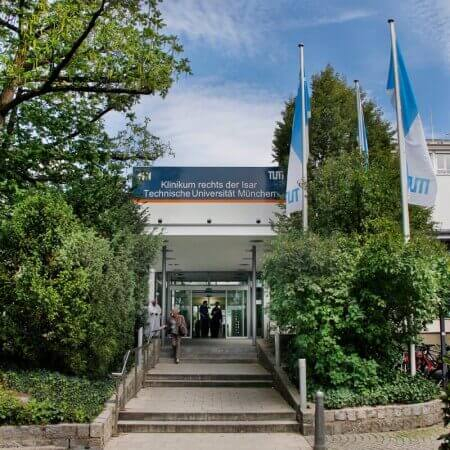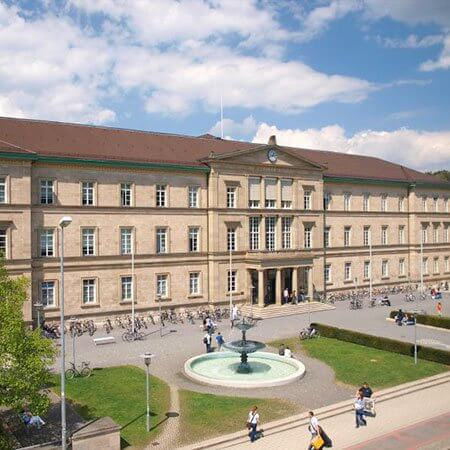Endometriosis is one of the most common gynecologic diseases in women of reproductive age. It is a frequent cause of infertility and recurrent miscarriages. The disease causes symptoms that impair the woman's quality of life, such as pelvic pain, dyspareunia (painful sexual intercourse), and abnormal uterine bleeding. Conservative treatment methods are ineffective, and therefore most women with endometriosis require surgery. You can opt to undergo your treatment abroad so that it is safe and minimally traumatic. You are welcome to visit the Booking Health website to find out the cost of treatment and compare prices at different hospitals to select an effective medical care program at the best price.
Content
- Conservative therapy
- Endometrial foci removal
- Uterus removal surgery
- Infertility treatment
- How to undergo treatment abroad?
Conservative therapy
There are no reliable methods of conservative treatment of endometriosis that could lead to a regression of symptoms or a decreased number of endometrial foci in the long term. The effect of the treatment is short-term, and it cannot be used for life, since the most effective treatment methods do more harm than good. They cause artificial menopause with an increased risk of osteoporosis, cardiovascular disease, atrophic vaginitis, and pelvic organ prolapse. Such drugs are therefore usually intended for a course of up to 6 months. These can be used as preparation for surgery to reduce the size of endometriosis foci and make it easier for a doctor to remove them.
The following medicines can be prescribed for long-term use:
- progestogens can be used constantly or only in the second phase of the cycle, if a woman is planning a pregnancy;
- oral contraceptives (these can be used after surgery to remove endometriosis foci to reduce the risk of their recurrent development);
- intrauterine devices reduce the risk of recurrent endometriosis after surgery and protect against uterine bleeding;
- nonsteroidal anti-inflammatory drugs and neuromodulators relieve pain.
Endometriosis cannot be cured with medicines. Danazol or GnRH agonists can be used to reduce endometrial foci, but after their withdrawal, the disease will progress, and within a few months, the growth of endometrial tissue will reach its previous size.
Endometrial foci removal
Endometrial foci can be located in the uterus, ovaries (endometrioid cysts), peritoneum, and other organs. Theoretically, they can develop anywhere in the body. Although, in practice, doctors most often deal with genital forms of endometriosis.
Doctors abroad perform laparoscopic operations as a surgical treatment for the disease. Surgeons make short abdominal incisions, insert thin, long instruments with a video camera attached through them, examine the abdominal cavity, and remove or cauterize any endometrial foci found. The results of the operation depend on whether a doctor was able to find and remove all areas of the endometrial tissue spread. If some of the foci remain in the abdominal cavity, the risk of the disease recurring will be significantly increased.
Methods for removing and destroying endometrioid growths can be different:
- mechanical removal;
- shaving;
- enucleation of endometrioid ovarian cysts;
- laser or radiofrequency ablation;
- resection (partial removal) of the affected organs.
The choice of tissue removal options depends on the size of the lesion and its location. For example, ablation is usually not used on the ovary to avoid thermal damage to healthy tissue and preserve the ovarian reserve.
Uterus removal surgery
A hysterectomy is the most effective treatment for endometriosis and the only possible way to cure this disease forever, with a guarantee close to 100%. If the uterus is no longer present in the woman's body, the tissues of the inner lining of the uterus cannot grow and spread throughout the body. In addition, other problems can also be solved at the same time. For example, doctors can cure cervical dysplasia, which develops due to the human papillomavirus, eliminate the problem of endometrial hyperplasia, and prevent the development of endometrial cancer.
The problem is that most women with endometriosis are patients of reproductive age who are interested in preserving their uterus. As a result, a hysterectomy is rarely used in treatment abroad for this disease, except in older women or patients with severe adenomyosis (internal endometriosis).
A hysterectomy can be performed through a vaginal, abdominal (abdominal incision), or laparoscopic (minimally invasive) approach. Foreign specialists prefer to perform operations through vaginal and laparoscopic approaches, as they are less traumatic, less likely to cause complications, and contribute to the rapid recovery of patients upon the completion of treatment.
Infertility treatment
The main goal of treating endometriosis in women with infertility is often the restoration of fertility and the onset of a pregnancy. The following approaches can be used to solve the problem of infertility:
- conservative therapy with immediate attempts to get pregnant after the completion of the course of treatment (a patient has a reduced number of endometriosis foci, but they will reach their previous size after a few months);
- surgical removal of endometrial foci, for example, near the fallopian tubes, which disrupt their patency and transport of the egg to the uterus;
- surgical removal of endometrial foci in the uterus and further plastic reconstruction of the organ (a complex operation that is best performed at a reputable hospital);
- in vitro fertilization is especially effective if the main mechanism for the development of infertility is fallopian tube obstruction caused by endometrial growths.
Most women with infertility caused by endometriosis can get pregnant after surgical treatment or IVF.
How to undergo treatment abroad?
You are welcome to select a diagnostic and treatment program through the Booking Health service to undergo your treatment abroad. On our website, you can find out prices and compare the cost of treatment at different hospitals to choose the best option. Treatment abroad offers the following benefits:
- organ-preserving treatment (uterus preservation);
- minimally invasive operations (laparoscopy) instead of open ones;
- sparing techniques for removing endometrial foci in the ovaries, which allow a patient to preserve her ovarian reserve as much as possible;
- surgeons successfully perform complex reconstructive surgery on the uterus in patients with internal endometriosis, and what is more, the chance of a pregnancy remains;
- after treatment in developed countries, the majority of women with endometriosis restore their fertility or they get pregnant through the use of assisted reproductive technologies;
- doctors will select conservative therapy after surgery that will reduce the risk of disease recurring.
When you choose a medical care program through the Booking Health website, the cost of treatment for you will be lower than when you contact a hospital directly. The lower price is due to the absence of taxes for foreign patients. When you make your treatment appointment through Booking Health, you will receive insurance against unexpected medical expenses. This means that after the start of your medical care program, the cost of treatment will not increase, even if additional procedures are required.
Authors:
This article was edited by medical experts, board-certified doctors Dr. Nadezhda Ivanisova, and Dr. Bohdan Mykhalniuk. For the treatment of the conditions referred to in the article, you must consult a doctor; the information in the article is not intended for self-medication!
Our editorial policy, which details our commitment to accuracy and transparency, is available here. Click this link to review our policies.
Sources:
NHS
MedicineNet




















